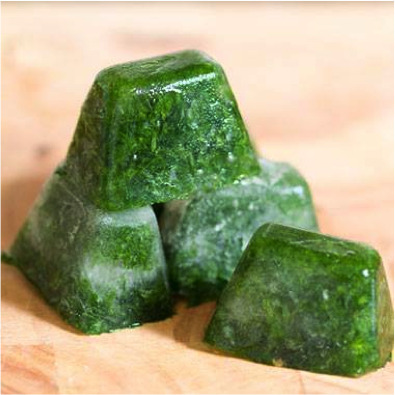Fresh herbs are one of the many joys of springtime. They add wonderful, bright flavor to your foods and can make an otherwise colorless food colorful! (Think chives on a baked potato). Whether you’re buying bunches of parsley from the grocery store, or harvesting rows of basil leaves, we all have found ourselves with more herbs than we can use in a given time.
Don’t throw excess herbs away! Preserve your fresh herbs easily by freezing them. Here are some top tips for freezing fresh herbs.
- Keep your freezer temperature at 0 °F for best quality. Keep a thermometer in your freezer to monitor the temperature.

- Chop your herbs finely by using a sharp knife or scissors. Place pinches of the herb in ice cube trays, and cover them with water or olive oil. Once frozen, remove the cubes and store in a freezer bag for 3-6 months. Add a cube to your meals when cooking. Don’t hesitate to use this “ice cube tray” freezing method with combinations of different types of herbs that you use together.
- Other freezer storage methods for herbs include storing them in freezer grade bags or containers, including jars. All containers used for freezing should be moisture-proof, vapor-proof, and designed for freezing.
- Always label your frozen herbs, and any foods that you freeze. Labels should include the product name and a date. Many herbs will look alike when chopped and frozen – so it’s important to know what is in the container.
- No matter what container you use to store herbs, consider that herbs are made of mostly water. Water expands when frozen, so leave some extra space, or “headspace” in the container.
- During freezing, cell walls of foods are broken down so they will likely be a much softer texture when thawed. For this reason, herbs that have been frozen are best used in cooked dishes like soups or stews, rather than as toppings.
For more information on Selecting, Storing and Using Fresh Herbs, read OSU Extension’s Fact Sheet(PDF).
Sources:
http://www.four-h.purdue.edu/foods/Freezing%20fresh%20herbs.htm
Written by: Joanna Rini, Extension Educator, Family and Consumer Sciences, Ohio State University Extension
Reviewed by: Chris Kendle and Treva Williams, Extension Educators, Family and Consumer Sciences, Ohio State University Extension
